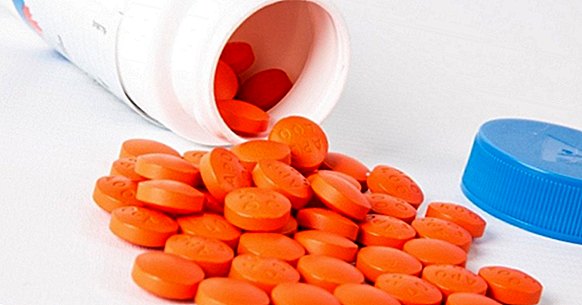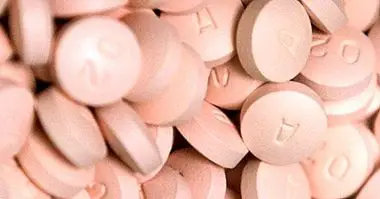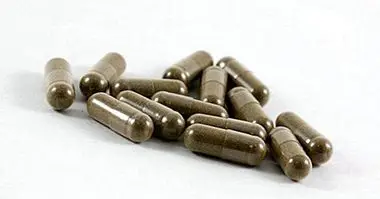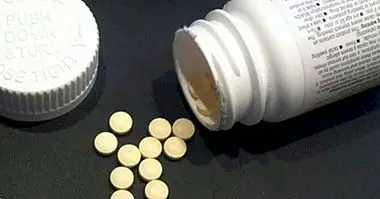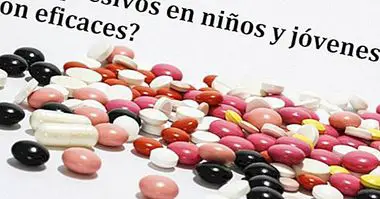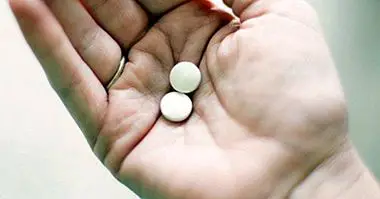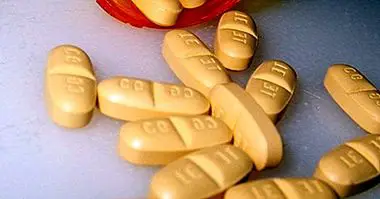MAOIs (monoamine oxidase inhibitors): effects and types
Although most psychiatrists currently prescribe selective serotonin reuptake inhibitors (SSRIs), norepinephrine (ISRN) or both neurotransmitters (SNRI) to treat depressive symptoms, in atypical cases it is still used with some frequency the oldest type of antidepressant: MAOIs.
In this article we will describe The main effects of monoamine oxidase inhibitors and the three types that exist, depending on the subclass of this enzyme that is inhibited by the activity of the drug: the irreversible and non-selective MAOIs, the MAO A inhibitors and the MAO B inhibitors.
- Related article: "Types of antidepressants: characteristics and effects"
What are MAOIs? Effects of these drugs
Selective inhibitors of the monoamine oxidase enzyme, commonly known by the acronym "IMAO", are the first class of drugs that was used for the treatment of depression . The original MAOI, iproniazide, was developed in the 1950s as a drug for tuberculosis and attracted attention because of its positive effect on mood.
The MAOIs exercise a agonist effect in monoaminergic neurotransmitters , the most important of which are dopamine, adrenaline, noradrenaline and serotonin. The same happens with the rest of antidepressants, among which tricyclics, selective inhibitors of serotonin reuptake and fourth-generation antidepressants stand out.
The enzyme monoaminooxidase is located in the terminal buttons of the axons of the monoaminergic neurons. Its function is to eliminate neurotransmitters of this type to prevent them from accumulating in excess. MAOIs reduce the activity of this enzyme, and consequently increase the levels of monoamines.
There are two types of MAO enzyme : A and B . While the former deals with the metabolism of serotonin and norepinephrine, very relevant in depressive symptoms, MAO B is associated with the elimination of dopamine, which is related to a greater extent with other types of disorders, such as Parkinson's disease.
Currently these drugs they are used for above all to treat atypical depression , characterized by positive emotional response to pleasant events, weight gain, hypersomnia and sensitivity to social rejection. Some of them also apply in cases of panic disorder, social phobia, cerebral infarction or dementia.
Types of MAOIs
Next, we will describe the main characteristics of the three types of drugs of the class of monoamine oxidase inhibitors. This division is related to two factors: the intensity of the effects (transient inhibition or total destruction of the MAO enzyme) and the selectivity with respect to the two subtypes of MAO (A and B).
1. Irreversible and non-selective inhibitors
Initially the MAOIs completely destroyed the monoamine oxidase enzyme , preventing its activity until it was synthesized again (which takes place approximately two weeks after the start of pharmacological treatment). That is why they were classified as "irreversible".
In addition, the first MAOIs targeted both the monoamine oxidase A and the B, so that they increased the levels of all the monoamines in an indistinct manner. The qualifier "non-selective" is derived from this characteristic.
Both the enzyme MAO A and B are also responsible for eliminating the excess of tyramine, the monoamine whose accumulation explains the most characteristic side effects of MAOIs: hypertensive crisis or "cheese effect", which can cause heart attacks or cerebral hemorrhages after consuming foods with tyramine such as cheese, coffee or chocolate.
Since both irreversible and non-selective inhibitors inhibit both enzymes, the increase in tyramine levels associated with their consumption was extreme. Such risk caused a strong interference in the life of those who took IMAOs of this class and spurred the development of other types of MAOIs with more specific effects.
Among the drugs in this category that are still being marketed, we find Tranylcypromine, isocarboxazide, phenelzine, nialamide and hydracarbazine . All of them belong to the group of chemical compounds known as hydrazines, with the exception of tranylcypromine.
2. Inhibitors of monoamine oxidase A
The abbreviations "RIMA" and "IRMA" (reversible inhibitors of the enzyme monoaminooxidase) are used to refer to a type of MAOI that does not completely eliminate the enzyme, but inhibits its activity while the effects of the drug last. In addition, most IRMAs perform their function selectively on MAO A.
The role of the MAO A enzyme is to metabolize noradrenaline and serotonin . Since these monoamines are the neurotransmitters most clearly involved in depressive symptoms, the selective inhibitors of this subclass of the MAO enzyme are the most useful in the treatment of depression.
The most well-known MAOIs are moclobemide, bifemelan, pirlindol and toloxatone. They are basically used as antidepressants, although l a moclobemide is also used for the management of social anxiety disorder and the one of panic, and the bifemelano is applied in cases of cerebral infarction and / or senile dementia in which depressive symptoms are present.
3. Inhibitors of monoamine oxidase B
Unlike monoamine oxidase A, type B is not associated with the inhibition of noradrenaline and serotonin but that of dopamine. That is why, more than to treat depression, the MAO B are used to slow down the progress of Parkinson's disease . However, they are much less common than those that inhibit MAO A.
There are two particularly used monoamine oxidase B inhibitors: rasagiline and selegiline. Both are irreversible, that is, they destroy the MAO enzyme instead of inhibiting its function temporarily. Its main use scope is framed in the early stages of Parkinson's disease.

